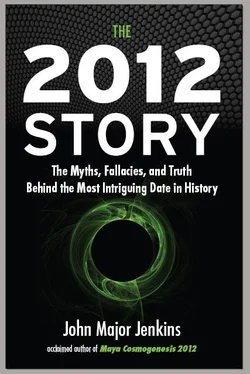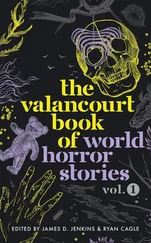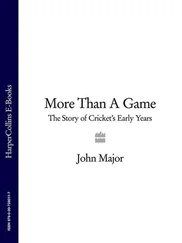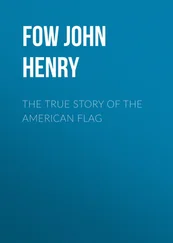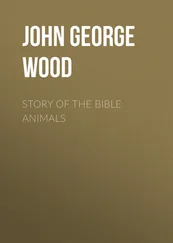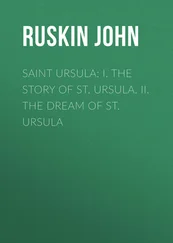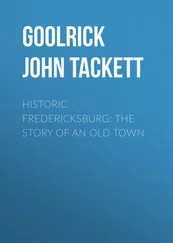2009, November.Sony Pictures releases mass media 2012 movie.
The 2012 story is, of course, not yet finished. As of May 31, 2009 (a 4 Ahau day), there are exactly 5 tzolkin cycles (1,300 days) remaining to December 21, 2012. We might wish to recognize the 260-day time resonance countdown of 4 Ahau dates: May 31, 2009; February 15, 2010; November 2, 2010; July 20, 2011; April 5, 2012; December 21, 2012. Interestingly, the initiation day of contemporary day-keeper practice, 8 B’atz (8 Monkey), occurs on December 12, 2012, nine days before 13.0.0.0.0.
December 21, 2012.The cycle-ending date of the 13-Baktun period of the Maya Long Count calendar.
December 21, 2012 AD = 13.0.0.0.0 = 4 Ahau 3 Kankin
1. Frontispiece poem: Jenkins, John Major. Shadow, Stone, and Green . Denver, CO: Four Ahau Press, 2008.
INTRODUCTION: AN UNSTOPPABLE IDEA
1 Tedlock, Dennis (trans.). The Popol Vuh: The Definitive Edition of the Mayan Book of the Dawn of Life and the Glories of Gods and Kings, revised edition. New York: Simon & Schuster, 1996, p. 70.
2 McKenna, Terence. “The Light of the Third Millennium.” Talk given in Austin, Texas, 1997. http://edj.net/mc2012/TM-Light.mp3(at 35:10).
3 Fox news report with Dr. Michio Kaku. April 25, 2009. http://www.youtube.com/watch?v=hujQg2E_fDw. Dr. Kaku himself doesn’t assert this, but the banner beneath the report does.
CHAPTER 1. RECOVERING A LOST WORLD
1 Covarrubias, Miguel. Mexico South. New York: Alfred A. Knopf, 1947, p. 187.
2 Proceedings of the National Academy of Science , March 24, 2009. www.pnas.org.
3 Weatherford, Jack. Indian Givers . Ballantine Books, 1989.
4 de Landa, Friar Diego. Yucatan Before and After the Conquest, trans. by William Gates. Baltimore: The Maya Society, 1937. Also at Sacred Texts online: http://sacred-texts.com/nam/maya/ybac/ybac59.htm.
5 Goetz, Delia, and Sylvanus Morley (English trans. after the Spanish trans. of Adrián Recinos). The Popol Vuh: The Sacred Book of the Ancient Quiché Maya , original trans. by Francisco Ximénez. Norman, Oklahoma: University of Oklahoma Press, 1950, p. 6.
6 Tedlock, Dennis (trans.). The Popol Vuh, revised edition, 1996, pp. 22-25.
7 Perera, Victor, and Robert D. Bruce. Last Lords of Palenque. Berkeley and Los Angeles: University of California Press, 1982; Bruce, Robert D. Lacandon Dream Symbolism . 2 vols. Mexico: Ediciones Euroamericanas, 1975-1979.
8 Graham, Ian. Alfred Maudslay and the Maya, A Biography. Norman, Okla.: University of Oklahoma Press, 2002, p. 99.
9 Fuentes, Carlos. Myself with Others: Selected Essays. New York: Farrar, Straus and Giroux, 1988.
10 Durán, Fray Diego. Book of the Gods and Rites of the Ancient Calendar, trans. by Fernando Horcasitas and Doris Heyden. Norman, Okla.: University of Oklahoma Press, 1971, p. xii.
11 Robertson, William. The History of America , 1777. Quoted in Tompkins, Peter, Mysteries of the Mexican Pyramids . New York: Harper & Row, 1976, p. 40.
12 de Pauw, Cornelius. Recherches Philosophiques sur les Américains , 1769. Quoted in Tompkins, Peter, Mysteries of the Mexican Pyramids . New York: Harper & Row, 1976, p. 42.
13 Porterfield, Kay Marie. “Ten Lies about Indigenous Science—How to Talk Back.” http://www.kporterfield.com/aicttw/articles/lies.html. See also Porterfield, Kay Marie, and Emory Dean Keoke. The Encyclopedia of American Indian Contributions to the World: 15,000 Years of Invention and Innovation , which details more than 450 examples of indigenous science and independent innovation from the abacus to zucchini.
14 Stephens, John Lloyd. Incidents of Travel in Central America, Chiapas & Yucatan. London: Century, 1988, p. 49.
15 Tompkins, Peter. Mysteries of the Mexican Pyramids. New York: Harper & Row, 1976, pp. 166-167.
16 Woolley, Benjamin. The Queen’s Conjurer: The Science and Magic of Dr. John Dee.
17 Salisbury, Jr., Stephen. The Mayas, the Sources of Their History: Dr. Le Plongeon in Yucatan, His Account of Discoveries. Worcester: Press of Charles Hamilton, 1877, p. 65.
18 Ibid., p. 65.
19 Coe, Michael. Breaking the Maya Code , revised edition, 1999, p. 138; Long, Richard. “Maya and Mexican Writing.” Maya Research 2 (1). New Orleans, 1935.
20 Coe, Michael. Breaking the Maya Code , revised edition, 1999, p. 138.
21 Graham, Ian. Alfred Maudslay and the Maya, A Biography. Norman, Oklahoma: University of Oklahoma Press, 2002, p. 102.
22 Goodman, Joseph T. The Archaic Maya Inscriptions. Volume 5 of Maudslay, Alfred, Biologia Centrali-Americana , 1897, pp. ii-iv.
23 Ibid., p. iv.
24 Ibid., p. v.
25 Coe, Michael. Breaking the Maya Code , revised edition, 1999, p. 140.
26 Thompson, J. Eric S. Maya Hieroglyphic Writing: An Introduction . Publication 589, Washington, D.C.: Carnegie Institution of Washington, 1950, p. 295. For essays exploring anagogical themes in world literature, see Strelka, Joseph P. Anagogic Qualities of Literature . University Park and London: The Pennsylvania State University Press, 1971.
27 Campbell, Joseph. The Hero with a Thousand Faces , second edition. Princeton, N.J.: Princeton University Press, 1968, p. 3.
28 Houston, Stephen. “Classic Maya Depictions of the Built Environment.” Function and Meaning in Classic Maya Architecture, ed. Stephen Houston. Washington, D.C.: Dumbarton Oaks Research Library and Collection, 1998, p. 355; and discussion, pp. 348-363.
29 Thompson, J . Eric S. “A Correlation of the Mayan and European Calendars.” Chicago: Field Museum of Natural History, Anthropological Series, 17(1):1-22, 1927, pp. 19-21. http://www.archive.org/details/correlationofmay171thom.
CHAPTER 2. THE LONG CAREER OF THE LONG COUNT
1 Malmström, Vincent. Cycles of the Sun, Mysteries of the Moon . Austin, Tex.: University of Texas Press, 1997, p. 258.
2 Tedlock, Barbara. “The Road of Light: Theory and Practice of Mayan Skywatching.” The Sky in Mayan Literature , ed. by Anthony F. Aveni. New York: Oxford University Press, 1992, pp. 18-42.
3 Wilber, Ken. No Boundary . Boston and London: Shambhala Publications, 1981.
4 Edmonson, Munro. Book of the Year: Middle American Calendrical Systems. Norman, Okla.: University of Oklahoma Press, 1988.
5 Coe, Michael. “Cycle 7 Monuments in Middle America: A Reconsideration.” American Anthropologist 59, 1957, p. 606.
6 Guernsey, Julia. Rituals & Power in Stone . Austin, Tex.: University of Texas Press, 2006, p. 14.
7 Schele, Linda, Peter Mathews, and Floyd Lounsbury. “Redating the Hauberg Stela.” Texas Notes , No. 1, 1990. http://www.utmesoamerica.org/texas_notes/TN-01.pdf.
8 Rice, Prudence M. Maya Calendar Origins: Monuments, Mythistory, and the Materialization of Time. Austin, Tex.: University of Texas Press, 2007.
9 Coe, Michael. The Maya. Great Britain: Thames & Hudson, 1966.
10 Malmström, Vincent. “Origin of the Mesoamerican 260-Day Calendar.” Science, 181, 1973, pp. 939-941.
11 Coe, Michael. Mexico, third edition, revised and enlarged. London: Thames & Hudson, 1988, p. 86.
12 Schieber de Lavarreda, Christa, and Miguel Orrego Corzo. Abaj Takalik. Guatemala City: Proyecto Nacional Tak-alik Ab’aj, Ministerio de Cultura y Deportes, 2001, p. 37.
13 Rice, Prudence M. Maya Calendar Origins: Monuments, Mythistory, and the Materialization of Time. Austin, Tex.: University of Texas Press, 2007.
Читать дальше
